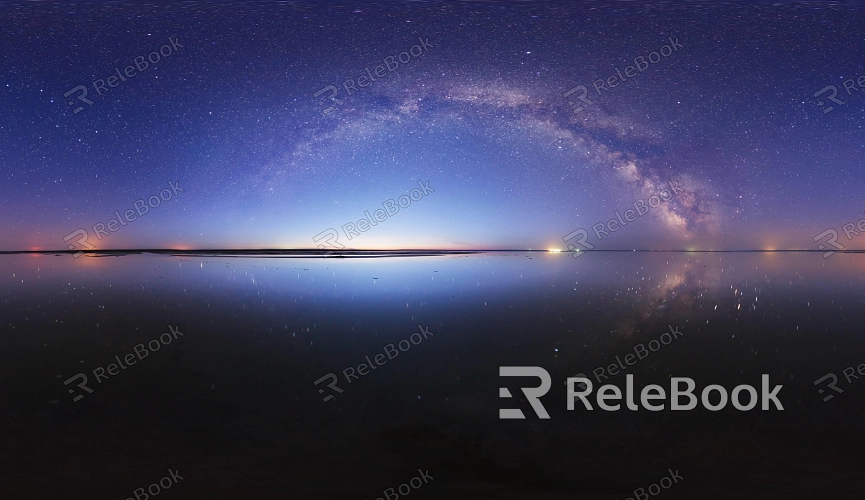What is HDR Brightness
Whether it's in architectural visualization, game scene creation, or movie special effects, HDR brightness is a key tool that allows designers to accurately depict lighting and shadows within a scene. Commonly used 3D software like Blender, 3ds Max, and Maya widely support the configuration and adjustment of HDR brightness. This article will explore the definition of HDR brightness, its importance in 3D design, how to apply it across different software, and how to optimize this parameter to enhance the quality of your work.

1.Definition and Concept of HDR Brightness
Definition of HDR Brightness: HDR brightness refers to the intensity and range of brightness in High Dynamic Range Images (HDRI). Unlike traditional images with limited dynamic range, which struggle to display both very bright and very dark areas simultaneously, HDR images use a broader brightness range, allowing for a more realistic simulation of natural lighting environments.
Concept in 3D Rendering: In 3D rendering, HDR brightness is controlled through specific exposure and lighting settings. The goal is to create a final image that presents a natural and rich lighting effect. It's not just about adjusting brightness levels; it's about extending the dynamic range of light so that both highlights and shadows in a scene are better represented.
2.Applications of HDR Brightness in 3D Modeling and Rendering
Architectural Visualization: In architectural rendering, HDR brightness is often used to simulate natural lighting conditions, such as sunlight and skylight. By adjusting HDR brightness, the appearance of a building can be made more realistic under various lighting conditions.
Game Design: In games, lighting effects directly impact the player's visual experience. HDR brightness can be utilized to create realistic lighting environments, making light and shadow transitions in game scenes more natural, such as day-night cycles or light penetrating objects to create complex effects.
Movie Special Effects: In film, HDR brightness enhances visual effects, seamlessly blending virtual and real scenes. For example, in a sunset scene, adjusting HDR brightness can gradually dim the sunlight while increasing the surrounding environmental light.
3.How to Adjust HDR Brightness in 3D Software
Blender: In Blender, HDR brightness can be adjusted through the environment lighting settings. Designers can import HDRI maps in the “World” panel and control brightness by adjusting intensity and exposure. This helps create lighting effects with depth and realism during rendering.
3ds Max: In 3ds Max, HDR brightness is typically adjusted using the V-Ray renderer. Designers can set HDRI maps in V-Ray’s “Environment and Effects” panel and fine-tune brightness using exposure control tools to achieve the desired lighting effects.
Maya: In Maya, HDR brightness adjustments can be made using the Arnold renderer. Designers can import HDRI files through Arnold’s “SkyDome Light” node and control HDR brightness by adjusting the “Intensity” and “Exposure” parameters to create more natural lighting effects.

4.Advantages and Challenges of HDR Brightness
Advantages:
Enhanced Detail: Adjusting HDR brightness allows for richer detail in both the highlights and shadows of an image. For instance, in architectural visualization, the lighting differences between the interior and exterior of a window can be better represented through HDR brightness adjustments.
Increased Realism: By fine-tuning HDR brightness, designers can simulate more realistic lighting environments, making rendered images closer to real-world lighting behavior.
Challenges:
High Hardware Requirements: Adjusting HDR brightness demands robust hardware performance, especially when handling high-resolution and complex scenes, which require significant computational power.
Complex Adjustments: Fine-tuning HDR brightness involves adjusting multiple parameters, requiring designers to have extensive experience and a deep understanding of lighting principles.
5.Practical Tips for Optimizing HDR Brightness
Choosing the Right HDRI Map: High-quality HDRI maps can significantly enhance the quality of rendered images. When selecting an HDRI map, designers should choose resources with varying brightness and contrast based on the specific needs of the scene.
Adjusting Exposure Value Appropriately: Exposure value directly influences how HDR brightness is portrayed. By adjusting the exposure value, designers can achieve optimal brightness under different lighting conditions.
Using Multi-Sampling Techniques: During rendering, employing multi-sampling techniques can effectively reduce noise and enhance the performance of HDR brightness. This is particularly useful in complex lighting environments, ensuring image clarity and detail.
6.Future Trends in HDR Brightness
AI-Assisted Adjustments: With the advancement of AI technology, future 3D software may integrate AI-assisted HDR brightness adjustment features, automatically optimizing lighting effects and reducing the manual workload for designers.
Higher Precision HDRI Resources: As hardware and storage technologies advance, future HDRI resources will offer higher brightness precision and richer detail, further enhancing the performance of HDR brightness.
HDR brightness plays a crucial role in 3D modeling and rendering. It not only enhances the realism of images but also helps designers better represent lighting effects within a scene. If you're looking for high-quality HDR images, 3D textures, SketchUp models, or 3ds Max models to create models and virtual scenes, Relebook offers a wealth of resources to help you achieve exceptional visual results in your projects.

